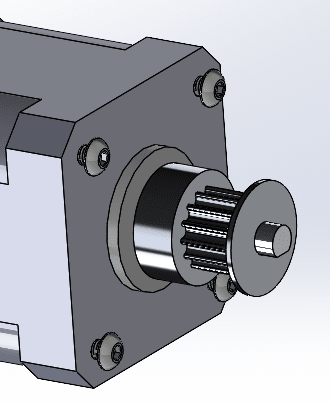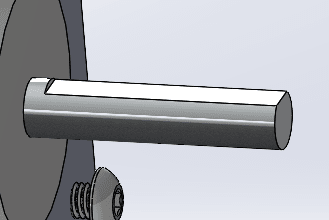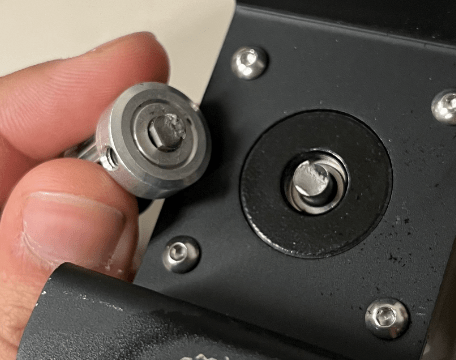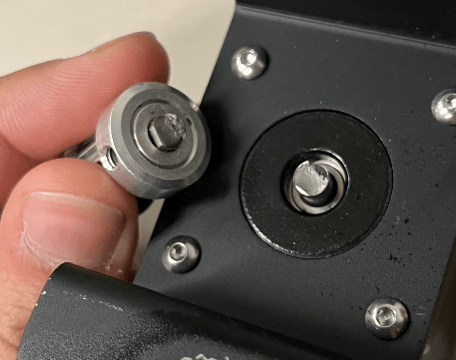sheafromme
Mechanical
Hello,
I'm having trouble determining how to account for stress concentrations at the root of the flat on a motor shaft due to overhung radial loading. I inherited a motor/pulley assembly that has an propensity for the shaft to snap off right at where it transitions from a D-shape to circular cross section. The pulley pictured below has a belt on it that applies the loading.

There is not a fillet where the shaft changes profile

I've looked through most of the resources I have here and I can't seem to find anything that addresses this particular situation. It' probably because it's not a great design...
So, I was just wondering how to properly calculate the fatigue life or at least how to account for the huge stress concentrations at that transition point due to bending.
Thank you!
-Shea
I'm having trouble determining how to account for stress concentrations at the root of the flat on a motor shaft due to overhung radial loading. I inherited a motor/pulley assembly that has an propensity for the shaft to snap off right at where it transitions from a D-shape to circular cross section. The pulley pictured below has a belt on it that applies the loading.

There is not a fillet where the shaft changes profile

I've looked through most of the resources I have here and I can't seem to find anything that addresses this particular situation. It' probably because it's not a great design...
So, I was just wondering how to properly calculate the fatigue life or at least how to account for the huge stress concentrations at that transition point due to bending.
Thank you!
-Shea


![[dazed] [dazed] [dazed]](/data/assets/smilies/dazed.gif) unfortunately there are a lot in the field that already got delivered apparently.
unfortunately there are a lot in the field that already got delivered apparently.![[hourglass] [hourglass] [hourglass]](/data/assets/smilies/hourglass.gif) I think I may end up flipping the pulley around because otherwise it has to rest right at that flat transition due to other assembly constraints.
I think I may end up flipping the pulley around because otherwise it has to rest right at that flat transition due to other assembly constraints.